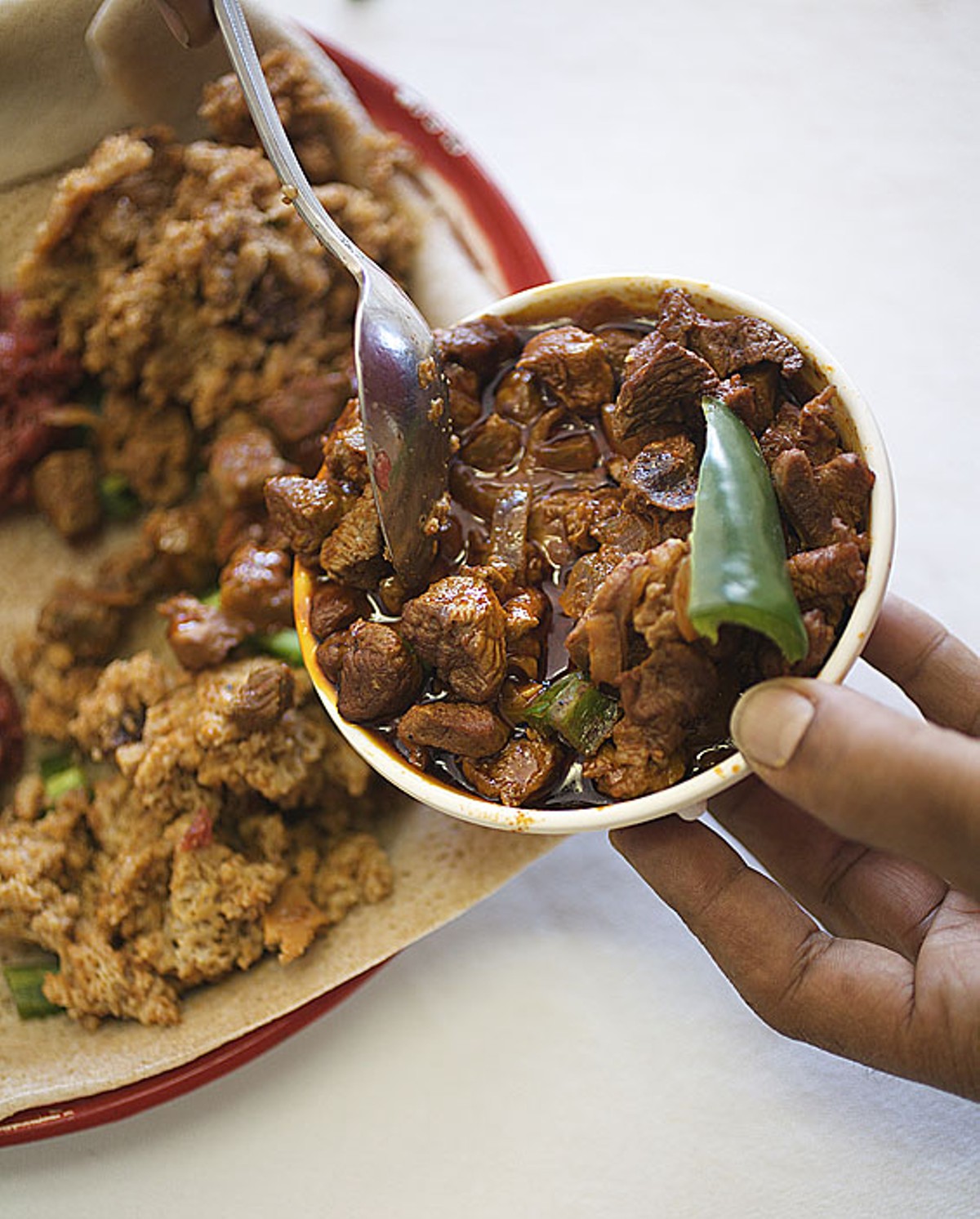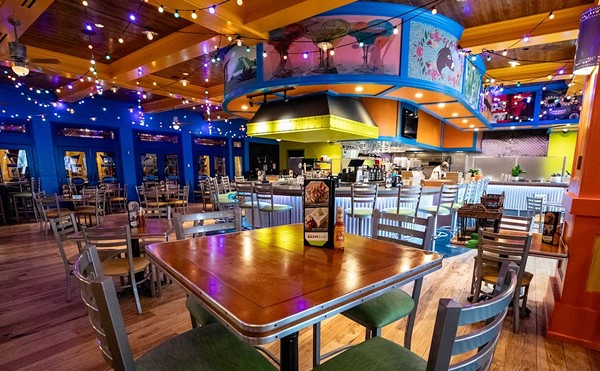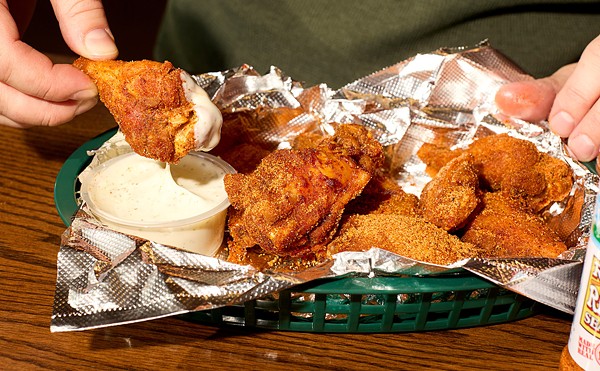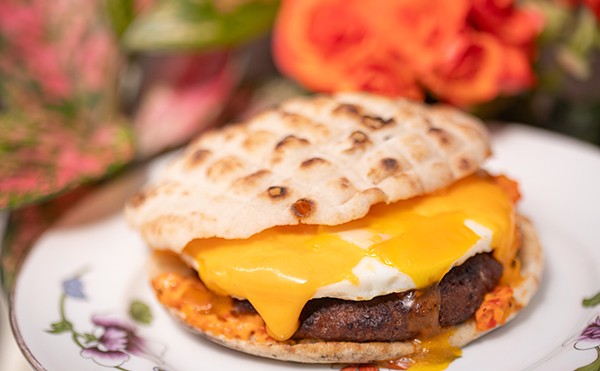Here, inside a converted IHOP, of all places, is Nobu's, one of the area's best sushi restaurants (maybe the best), the food elegantly simple and largely free of Americanized clutter. Pho Long remains unique, focused on Vietnam's beloved soup, accessible to both the novice who craves the most basic bowl of broth, rice noodles and sliced beef and the connoisseur who wants some tripe and tendon in there too. Indian Food, an Indian and Pakistani standout, might have closed recently, but De Palm Tree, a terrific Jamiacan restaurant, is still standing. And if we cheat, we can even include the building directly across Woodson Road, which houses La Monarca, a solid taqueria.
Easily overlooked amid all these riches is Blue Nile Market and Café. This is two small, contiguous storefronts, one a grocery store, the other an Ethiopian restaurant. The market opened almost three years ago; the restaurant followed a little later.
Blue Nile is very modest and very casual. The smiling person who invites you to have a seat is as likely to be one of the regular customers as the owner, who might be taking an order, helping in the kitchen or ringing up a sale in the market. Over the course of my visits, I think I saw most of these regulars as they sat eating or sipping coffee (from a coffee bar that appears to double as the restaurant's business office), chatting with one another or watching the satellite news from Ethiopia (lots of sun forecast for Addis Ababa).
The menu is brief, a primer on Ethiopian cuisine. As is customary in Ethiopia, dishes — here mostly stews (wot) and sautés (tibs) — are served atop the bread called injera, with additional injera served on the side. There are no utensils. You tear off a piece of injera (following etiquette, with your right hand) and use it to scoop your food.
Injera is traditionally made from fermented teff, a grain. It looks like a sponge flattened into a pancake, and it's that spongy texture that allows it to soak up the flavors of whatever dishes are served atop it. Yet even by itself, injera has a distinctive flavor, thanks to its fermentation: sour, almost lemony. At Blue Nile you can experience this flavor most intensely with quanta firfir, which tops injera with dried beef in a sauce with a moderate chile heat (and more injera). If you have no opinion of injera before trying quanta firfir, you will afterward.
For the most part, though, injera's flavor acts as a background note to strongly flavored dishes like the beef tibs. This is a sauté of beef, green bell pepper, tomato and onion, and while each of these retains its characteristic flavor, its punch comes from berbere, Ethiopia's most prevalent spice blend, whose bright chile heat is rounded out by a complex mix of warming spices such as clove and cardamom.
Lamb tibs is also listed on the menu. On one visit I wanted to order it — in my (admittedly limited) experience with Ethiopian cuisine, I've found lamb's natural gaminess a good match for berbere — but the restaurant was out of lamb. You might have better luck. For those who want an unforgettable experience, among its limited selection, Blue Nile does include kitfo, a mound of raw — not rare — finely chopped beef seasoned with clarified butter and very spicy chile powder.
Though vegetarian dishes play an essential role in Ethiopian cuisine — the majority of the country's residents are orthodox Christian and observe more than 250 fasting days when they refrain from eating meat — the vegetarian selection at Blue Nile is limited. The vegetarian combo includes samples of four dishes. My favorite was messer wot, a lentil stew literally red with chile heat. There's also a serving of peppery collard greens (gomen), and a chickpea dish that looked and tasted for all the world like creamed corn. The fourth component, shiro wot (crushed chickpeas), suffered only by comparison to the more vibrant preparations that topped the injera; it had the same homey appeal as refried beans.
St. Louis doesn't have many Ethiopian or Eritrean restaurants — four, at last count. The menu at Blue Nile doesn't offer as many choices as the others, and as I said, as a restaurant experience it's exceptionally laid-back. (Those who demand attention, a prompt delivery of the check and so forth should probably dine elsewhere.)
Yet taken on its own, it's another Jeffrey Plaza jewel. Like its neighbor, Pho Long, which eschews the little-bit-of-everything approach typical of the menus at Vietnamese restaurants to focus on doing a couple of things very well, Blue Nile pays dividends both to those in search of a reminder of home and those who are of a mind to try something new.


![Riddle's Penultimate Café & Wine Bar Closed "Until Further Notice" [Updated 3x, with Comment from KT Ayers]](https://media1.riverfronttimes.com/riverfronttimes/imager//u/4x3-s/2621964/riddles1103.jpg?cb=1643066818)



